Hungary: A Land of Rich Culture, Folklore, and Fiery Flavors
April 4, 2025
Hungary, a country nestled in the heart of Central Europe, is a land of stunning landscapes, deep-rooted traditions, and a culinary heritage that sets taste buds ablaze. From the vibrant folk tales passed down through generations to the unmistakable heat of paprika-infused dishes, Hungary offers a cultural feast for the senses. Its history is equally captivating, marked by a mix of invasions, resilience, and innovation. The Magyars, the ancestors of modern Hungarians, arrived in the Carpathian Basin in 895 AD, establishing the foundations of the Hungarian state. Over the centuries, Hungary has witnessed the reign of kings like St. Stephen, Mongol invasions, Ottoman rule, and the Austro-Hungarian Empire, each leaving an indelible mark on its culture and traditions. Let’s take a journey through this fascinating country and explore its history, folklore, food, and some of its most iconic flavors.
The Magic of Hungarian Folklore
Hungary’s folklore is steeped in mysticism, with tales of fairies, witches, and courageous heroes shaping the nation’s identity. The Hungarian people have a strong oral storytelling tradition, filled with ancient legends such as the epic of The White Stag, which tells of the mythical origins of the Hungarian people. Other fascinating legends include the tale of King Matthias, known for his wisdom and just rule, and the chilling story of Countess Elizabeth Báthory, often referred to as the “Blood Countess.” These stories, often accompanied by traditional Hungarian music and dance, remain a vibrant part of the country’s cultural fabric.
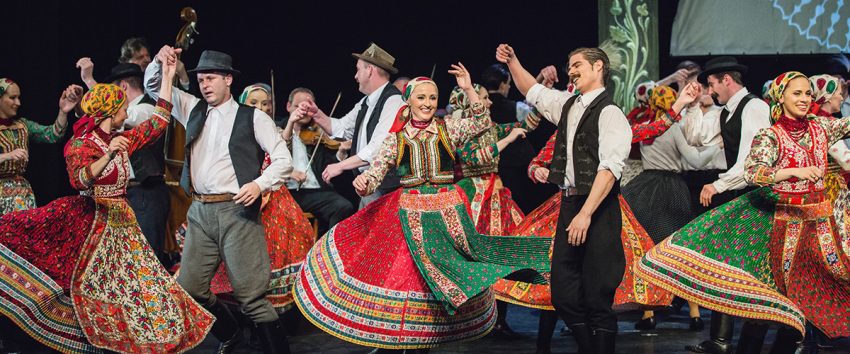
Folk traditions also come to life in Hungary’s colorful embroidery, intricate egg painting, and the lively csárdás dance, a spirited folk dance that showcases the country’s passion and energy. Festivals celebrating Hungarian heritage, such as the Busó Carnival in Mohács, where people wear frightening masks to chase away winter, keep these traditions alive.
The Beauty of Hungarian National Clothing
Hungarian traditional attire is a striking reflection of the country’s rich cultural heritage. Men typically wear embroidered shirts, trousers, and vests, often complemented by wide belts and distinctive boots. Women’s clothing is even more intricate, featuring beautifully embroidered blouses, colorful skirts, and decorative aprons. The embroidery, often displaying floral motifs and vibrant patterns, is a hallmark of Hungarian craftsmanship, with regional variations adding unique touches to each outfit.
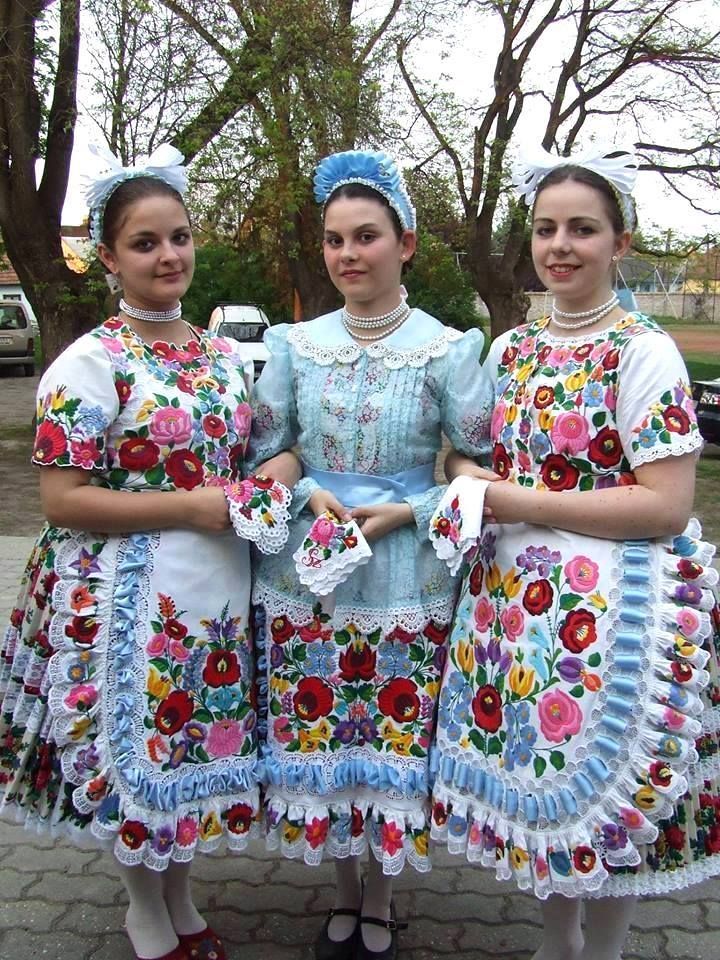
One of the most iconic pieces of Hungarian attire is the szűr, a long, heavily embroidered woolen coat historically worn by shepherds. Another distinctive element is the kalotaszegi headdress, a decorative headpiece worn by women in certain regions, particularly during celebrations and weddings. Today, traditional clothing is still proudly worn at folk festivals, dance performances, and special occasions, preserving Hungary’s cultural legacy.

A Culinary Wonderland: The Love for Paprika
When it comes to Hungarian cuisine, one spice reigns supreme—paprika. This deep red spice is not just an ingredient; it’s a national symbol. Brought from the New World centuries ago, paprika became an essential component of Hungarian cooking, adding bold color and smoky, sweet, or fiery flavors to many beloved dishes.

One of the most famous dishes featuring paprika is goulash, a rich and hearty stew made with tender beef, potatoes, onions, and a generous amount of the prized spice. Other beloved dishes like chicken paprikash and halászlé (fisherman’s soup) also showcase the depth and warmth that paprika brings to Hungarian cuisine. Whether mild or spicy, Hungarian paprika is an essential staple in every kitchen.
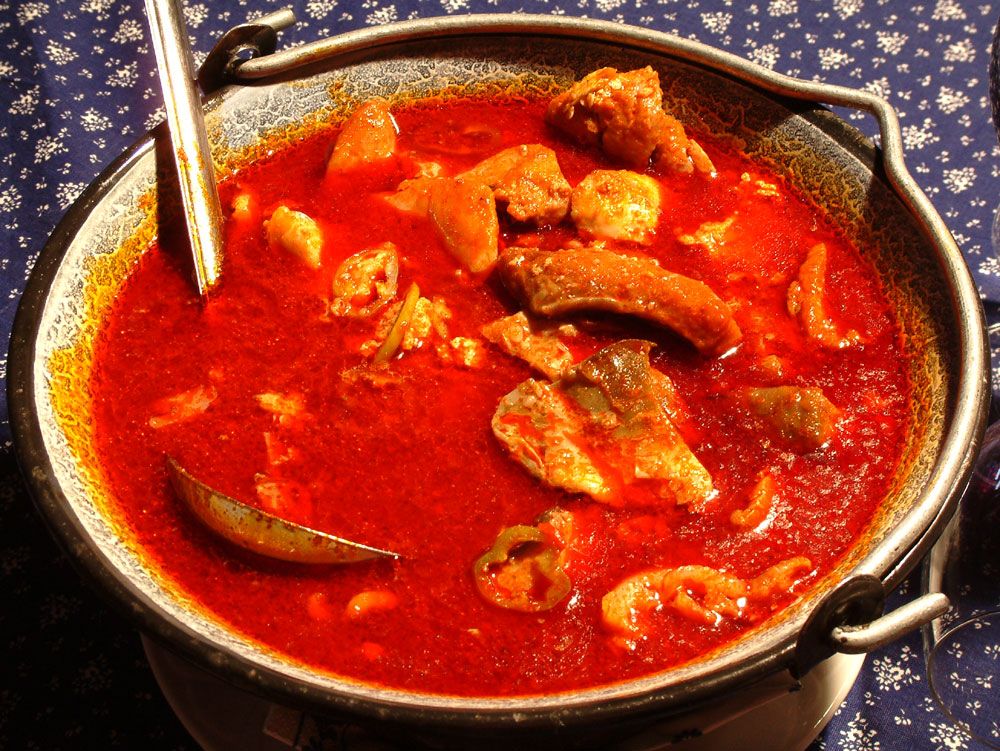
The Simplicity and Heartiness of Hungarian Kitchen
Hungarian cuisine is known for its rich, hearty, and home-cooked meals that have been passed down for generations. The traditional Hungarian kitchen makes use of simple yet flavorful ingredients such as meats, root vegetables, grains, and dairy. Dishes like lecsó (a pepper and tomato stew), töltött káposzta (stuffed cabbage rolls), and pogácsa (savory scones) showcase the comforting and rustic essence of Hungarian food. Bread is a staple in nearly every meal, often served with fresh butter, cheese, or cured meats. Despite its simplicity, Hungarian cuisine is packed with deep flavors and time-honored cooking techniques that make every dish a satisfying experience.
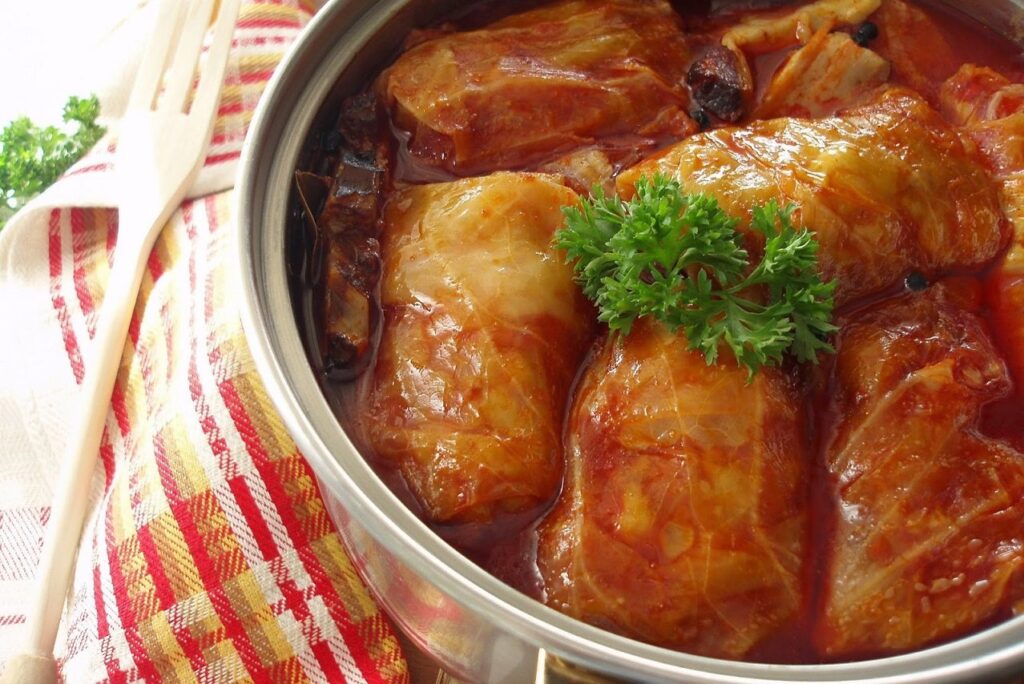
Pálinka: The Spirit of Hungary
No Hungarian feast is complete without a glass of pálinka, a traditional fruit brandy with a kick. Made from a variety of fruits, including plums, apricots, and pears, pálinka is not just a drink—it’s an experience. Hungarians take great pride in their pálinka-making traditions, and it is often enjoyed as a digestive before or after meals.

A common Hungarian saying goes, “Pálinka is not just a drink, it’s medicine.” Whether enjoyed at celebrations or as a remedy for a cold, pálinka is deeply ingrained in Hungarian culture. Just be warned—it’s strong!
The History of Pálinka
Pálinka has a history as rich as its flavor. Distillation methods were introduced to Hungary as early as the 14th century, but it wasn’t until the 17th century that pálinka became widely popular. The word itself originates from the Slavic term páliť, meaning “to burn,” a fitting description for the fiery drink. During the reign of Maria Theresa in the 18th century, strict laws regulated its production, making pálinka an integral part of Hungarian heritage. For centuries, local families perfected their own unique distillation techniques, passing them down through generations. Today, Hungary holds a protected designation for pálinka, ensuring that only fruit brandy made within its borders using traditional methods can bear the name.
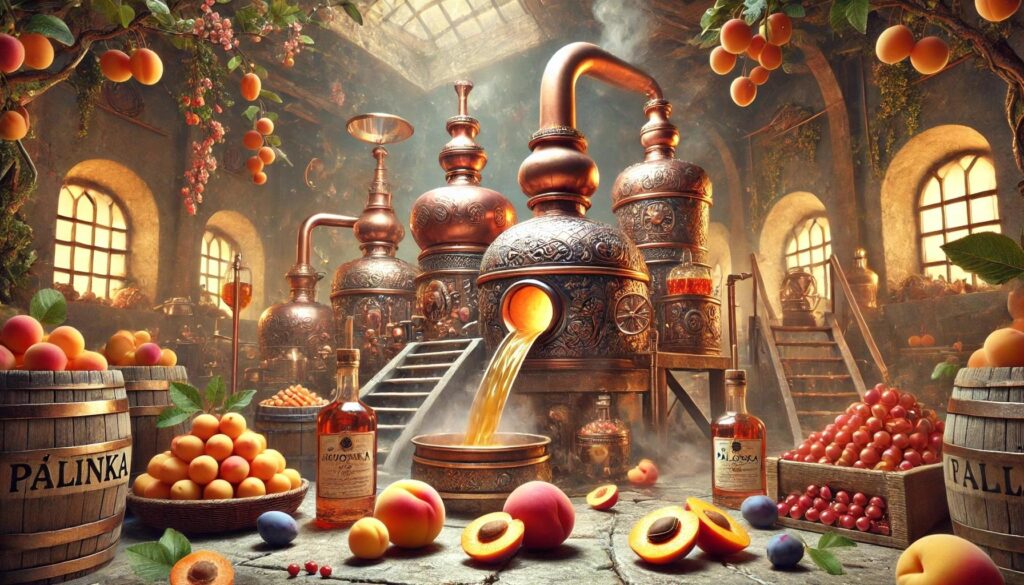
Immerse Yourself in Hungarian Culture
If you’re interested in truly experiencing Hungarian culture, we have something special for you! Take your time to check out this amazing and unique program we’ve prepared, where you’ll get to witness the vibrant traditions, music, and dance that have been passed down through generations. The Rajkó Folk Ensemble will take you on a journey through Hungary’s rich folklore, giving you a chance to connect with the heart and soul of the nation. Don’t miss this opportunity to dive deep into the essence of Hungarian culture at this cosy cellar!
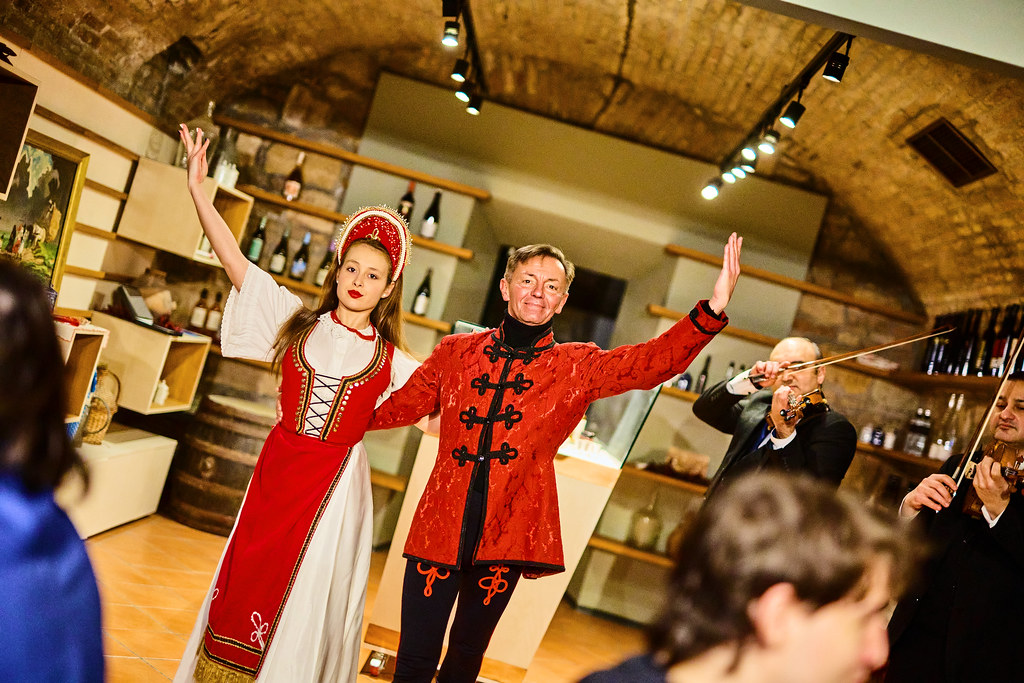
Folklore Performance
Starting from 18.04.2025, every Friday, the world-famous Rajkó ensemble will perform at this cosy cellar, located in the heart of Budapest. The programme begins at 19:00 and consists of two 30-minute acts with a break in between. Guests will get to experience Hungarian culture from a whole new perspective!

Founded in 1950, the Rajkó Folk Ensemble has been dedicated to preserving and authentically presenting Hungarian folk traditions for over 70 years. After the performance, guests can enjoy billiards, dinner, and a variety of drinks—guaranteeing a fantastic evening.
Meeting place: Gozsdu udvar & Király utca, 1061, Hungary

Date: Every Friday from 18.04.2025
- 18:30-19:00: Arrival, welcome drink, snacks
- 19:00-19:30: Folk Dance Performance Act I.
- 19:50-20:20: Folk Dance Performance Act II
Ticket options:
- Folk dance performance + welcome drink: 17 EUR
- Folklore performance + goulash soup: 25 EUR
- Folklore performance + 3-course dinner: 50 EUR
Menu: Folklore night with traditional goulash
- Welcome drink
- Traditional goulash with fresh sourdough bread (vegetarian option: seasonal vegetable cream soup)
- Mineral water
Folklore night with 3-course dinner (Guests can choose from two menus)
Menu A: Poultry and White Meat
- Foie gras canapé & apple pie mosaic
- Chicken breast with herbs, vegetable tartlet, cheddar cheese, porcini mushroom sauce, balsamic broccoli roses with almond
- Cheesecake with white chocolate & strawberry coulis
Menu B: Vegetarian
- Beetroot guacamole mousse, focaccia & apple pie mosaic
- Lentil and rice galette with vegetable tartlet, cheddar cheese, porcini mushroom sauce, balsamic broccoli roses with almond
- Cheesecake with white chocolate & strawberry coulis
Convenient Transfers with Pickup Hungary
To make your experience in Hungary even more seamless, we’re pleased to offer top-notch transfer services through PickupHungary. Whether you’re arriving in Budapest or traveling between cities, PickupHungary ensures you have a comfortable and hassle-free journey. With a range of options available, including airport pickups, city transfers, and private tours, you can focus on enjoying your Hungarian adventure without worrying about transportation.
Book your transfer today and enjoy a smooth ride to and from the cellar for an unforgettable folklore performance!
Hungary’s Enduring Charm
Hungary’s culture is a beautiful blend of old and new, where traditions are cherished and flavors are bold. From folklore to food, Hungary offers a cultural journey like no other. Egészségedre!